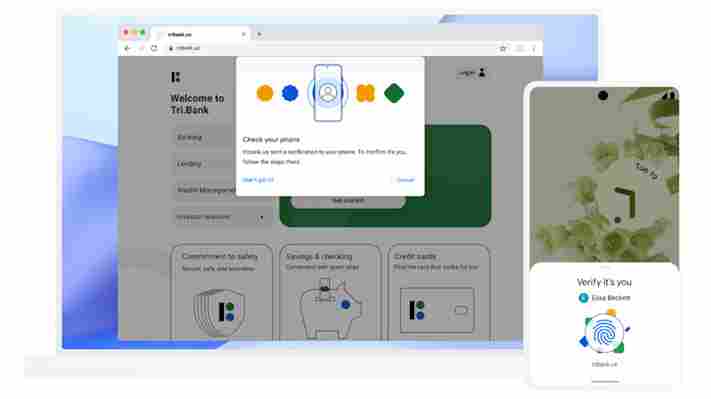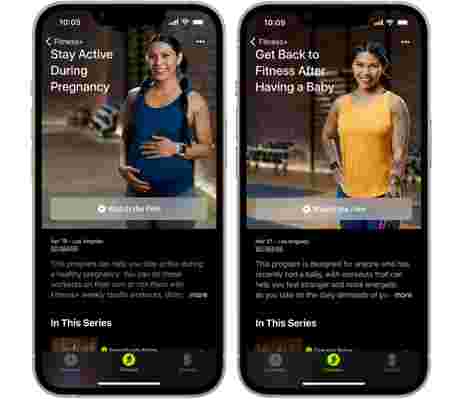Got a Vizio TV? Your viewing experience is about to get a lot worse
Vizio is getting a lot more aggressive with advertising, having announced a new feature called Jump Ads for its smart TV platform that will display banner ads over live TV shows.
Launching as a beta program, the first Vizio TV partner to test Jump Ads is Fox. The broadcaster will place Jump Ads at the end of the premier episode for its new docu-comedy Welcome to Flatch.
The Jump Ads will appear as banner that overlays the show, and it will prompt viewers to continue watching additional episodes of the program, or catch up on past episodes on the Fox Now app.
According to Vizio, this will allow viewersto "seamlessly extend their viewing experience with a single click of a button".
A step too far?

Vizio isn't the first TV manufacturer to redesign its smart TV platform to show ads more prominently.
Last year, LG was criticized for delivering autoplaying ads to users trying to update their streaming apps. More recently, Roku TV owners complained of banner ads being displayed over live TV broadcasts.
In the case of Roku TVs , users are able to disable these adds by tweaking their TV's settings and turning off their display's ability to 'Use info from TV inputs'. As PCMag pointed out at the time however, it's unclear whether disabling this setting will mean you lose out on other, more useful smart TV features.
It's not unusual for smart TV platforms to display ads on your home screen or main menu, but there certainly seems to be a growing trend for more aggressive advertising encroaching onto live broadcasts.
For some, the Jump Ads feature may be genuinely useful; in a study of 6,000 TV viewers, information technology consultant Accenture found that 60% considered the process of navigating between live TV, streaming apps, and different providers to be "very frustrating", with 44% saying they spent more than six minutes trying to find something they want to watch.
Streamlining the whole process could be a real help to anyone who finds it difficult to navigate the huge wealth of smart TV content available today. However, intrusive ads might be a step too far for some consumers, especially if they're being displayed over live broadcasts, which many would consider separate from the smart TV platform itself.
Furthermore, if these ads were targeted based on viewing habits or other personal data, questions about privacy would be rightly raised. We've come to expect our smartphones and Internet search engines to serve us up personalized ads, but our TVs? That may be a step too far.
Correction: April 7, 2022
An earlier version of this article incorrectly stated that Vizio would have no control over the ads placed over content. VIZIO controls the advertising on its platform, and says that it "has no intentions of using this capability beyond its usefulness as a program extension".
Via FlatPanelsHD
Apple, Google and Microsoft join forces to try and kill off passwords
Some of the world's biggest tech companies have announced plans to try and remove the need for passwords for good.
Apple, Google and Microsoft have joined forces to push the wider availability of passwordless logins in a major way, promoting instead a common standard to implement widely-used and convenient passwordless sign-ins, across all their platforms.
That standard – created by the FIDO Alliance and World Wide Web Consortium – is a big step on from what’s used for more secure logins, over and above a basic username and password, right now. Namely the likes of two-factor authentication (2FA, which represents a second login step of a verification code texted to a smartphone for example) or the use of an app like a password manager.
Bye bye passwords?
FIDO authentication already facilitates passwordless sign-in across some websites and apps, but the big difference here is about making the process not just more widely adopted, but more secure due to an end-to-end passwordless option.
What this means is that users will no longer have to sign-in for the initial login across every website or app, on every individual device, to enable passwordless access in the first place. Instead, people will simply login by unlocking their phone – via whatever method they normally employ, like a fingerprint reader for example, or PIN – and that’ll automatically unlock the account.
So, say you’re logging in to a website on your PC, all you’ll need is to have your smartphone on you, and it’ll be possible to sign-in to the site on your computer’s browser by unlocking the phone – that’s all there is to it (the phone stores the FIDO ‘passkey’ used to access the account).
In short, you can forget all about passwords in this new online world being ushered in, and with supporting sites and services, all you’ll need is your phone and its login method.

Analysis: The full rollout will take some time, though…
So, when is this big step forward on the security front going to happen, you may well be wondering? The three tech giants say they plan to facilitate this across all their major platforms over the course of the coming year.
For Google, that of course means Android and Chrome, for Apple, macOS, iOS and Safari, and for Microsoft, Windows and Edge.
The end result of this should be a massive increase in support for these more secure FIDO-based logins, streamlining and simplifying sign-ins by ditching passwords (and related second-layer security such as 2FA).
As we already touched on, this is not just about convenience, but also security, as it’s no secret how wonky traditional passwords can be when people come up with easy to remember passwords – which are easily guessable – and they reuse them multiple times.
Or indeed folks fall prey to things like phishing scams which can extract usernames and passwords, or alternatively through no fault of their own, details can be leaked online via a third-party data breach . All of these dangers are swept away with this new passwordless approach, thankfully.
All this won’t happen immediately, of course, and as mentioned, support is going to be worked on throughout the rest of this year, and into 2023, with effort needed to implement the system not just from the big three tech firms, but also site and app developers.
So, passwords aren’t going to disappear overnight – but the good news is that with this announcement, their days are now pretty firmly numbered…
Apple Fitness Plus now helps new mothers get active after childbirth
Apple has rolled out a new series of workouts to help new mothers get back into exercise after giving birth.
The new workout series, called with impressive clarity, "Get Back to Fitness After Having a Baby," is, Apple says, designed to "help new mothers feel stronger and more energetic as they take on the daily demands of parenthood."
That demand, as most new moms can tell you, includes lifting the baby, carrying the child around in your arms (usually while balancing something else in the other arm), tugging a stroller through sand at the beach (okay, maybe that was just us), and dead-lifting a car seat (with baby!).

The workouts focus on core, strength, and Apple's now trademark Mindful Cooldowns. Like other Fitness+ regimens, these are canned workouts that you can follow on your iPhone, iPad, and Apple TV.
Apple describes a progression of 10-minute workouts that starts with the Core for "foundational strength," and focuses on breathing, gentle moves and Apple notes, "pelvic floor work to help users reconnect to their core."
The Strength workouts help you build total-body strength, and Mindful Cooldowns offer stretches that zero in on tight spots associated with post-pregnancy.
To keep things real, the program's led by trainer and new mom, Betina Gozo. Also featured in the program are Fitness+ trainers and moms, Marimba Gold-Watts and Jonelle Lewis.
This isn't Apple's first pregnancy-related Fitness+ program. A year ago, Apple launched "Stay Active During Pregnancy." Other Women's health-focused programs include Apple's Womens' Health Study, which Harvard T.H. Chan School of Public Health, Apple, and the NIEHS launched in November 2019 to study menstrual cycles and their relationship to various health conditions.
What is Apple Fitness Plus?
Apple Fitness Plus launched in December 2020, while most of the world was in some form of lockdown and people were turning to home exercise classes as gyms closed their doors. Much like Peloton , it's a subscription plan where you pay a monthly fee for access to a rapidly expanding catalog of on-demand workouts led by professional instructors.
You don't get the same real-time interaction with coaches that you do with a Peloton all-access membership, but you will see your heart rate streamed from your Apple Watch onto the screen of your iPad or Apple TV as you exercise, allowing you to adjust your effort on the fly.
All exercise classes have adaptations to suit people who are perhaps recovering from an injury, have a limited range of movement, or use mobility aids.
It's not just indoor workouts, either. In January 2021 Apple launched Time to Walk – a series of podcast-style episodes narrated by famous actors, athletes, activists and other public figures, who share stories from their lives that you can listen to while you take a stroll outside.
In January 2022, Apple followed this up with Time to Run , wherein professional running coaches take you on a virtual tour of a city somewhere in the world while you run your own route wherever you happen to be. Pictures will appear on your watch along the way, and there's a themed soundtrack to help you envisage running alongside the trainer.